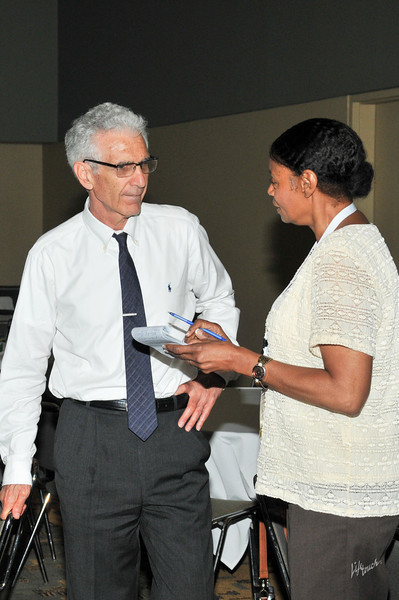Do More Than Measure Great Teaching: Support It
Conference News Online – 2013 By Carol Cantu
By Carol Cantu
 Robert Marzano’s pre-conference workshop at NAESP’s 2013 Annual Conference explored teacher effectiveness. He aimed to help principals see the differences between developing and measuring effectiveness. While both practices require formal observations, informal observations, and learning walkthroughs, the purposes of each are different. That difference should be articulated to teachers in a useful, easy-to-understand way.
Robert Marzano’s pre-conference workshop at NAESP’s 2013 Annual Conference explored teacher effectiveness. He aimed to help principals see the differences between developing and measuring effectiveness. While both practices require formal observations, informal observations, and learning walkthroughs, the purposes of each are different. That difference should be articulated to teachers in a useful, easy-to-understand way.
Marzano discussed with attendees the challenges of accurate effectiveness measurement. A teacher could have as many as 20 formal observations, and each could still be somewhat wrong. However, with professional development divided into digestible chunks, a teacher can always be growing, making progress that is on target for what he or she really needs—if the process is done correctly. Incorporating the latest research and best practices, Marzano explored how to identify distinguished teaching, along with how to incorporate differentiated instruction. Using videos and modeling a teaching segment himself, he gave principals the opportunity to practice identifying evidence of the quality teaching using a well-designed rubric.
Ultimately, the main takeaway from the session is that, when it comes to the principal’s role in helping teachers be more effective, professional development is more important than measurement. It takes about ten years for a teacher to become masterful in the profession. As teachers grow, the evaluation process should assess three equal parts:
- How much did teachers grow in the areas that they themselves identified as their target areas for growth?
- How well did the teacher score on the instrument for evaluation developed by the school system?
- What was the growth of the students, as determined by achievement tests?
Marzano provided attendees with handouts and his PowerPoint presentation, so that these resources will be at our fingertips during the coming year. I left feeling inspired and empowered to begin next school year to ready to inspire and empower teachers, who can then inspire and empower students.
Carol Cantu is principal of Baltimore Junior Academy in Baltimore, Maryland.
Photo courtesy of Lifetouch.
Copyright © 2013 National Association of Elementary School Principals. No part of the articles in NAESP magazines, newsletters, or website may be reproduced in any medium without the permission of the National Association of Elementary School Principals. For more information, view NAESP’s reprint policy.

